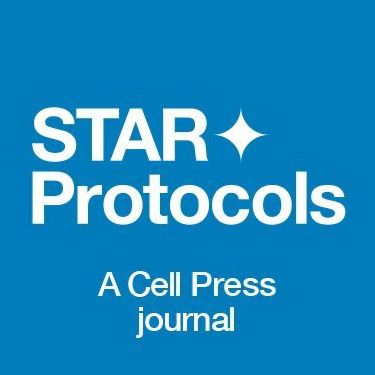T cell protrusions enable fast, localised initiation of CAR signalling
Actin-rich protrusions densely cover the surface of T cells and are well characterised for their role in cell migration. However, recent studies have uncovered their role in antigen surveillance and immune signalling initiation. To investigate how membrane protrusions initiate and contribute to signalling, from the first cell-cell contact to immunological synapse formation, we performed dynamic imaging experiments of endogenously tagged signalling proteins in T cells. To quantitatively capture the early dynamics of cell-cell interactions, we employed HER2‑CAR-expressing T cells targeting HER2⁺ breast cancer cells. By harnessing live-cell imaging and super-resolution stimulated emission depletion (STED) microscopy we were able to capture topological membrane changes and their correlation with mesoscale protein rearrangements over time. Our findings indicate that, prior to activation, key molecular players in T cell activation, including the kinase Lck, the phosphatase CD45 and the adaptor LAT, as well as the exogenously expressed CAR, lack any enrichment in actin-rich protrusions. However, upon initial contact of the T cell with the target cell, a dynamic and fast rearrangement of the surface receptors, phosphatases, and kinases occurs within the protrusions, ensuring a rapid and effective initiation of the immune signalling cascade. The rapid clustering of the HER2-CAR occurs preferentially within protrusions rather than flat membrane regions and is accompanied by enhanced recruitment of the kinase ZAP-70 and LAT. While the localisation of the kinase Lck remained unchanged, protrusion-cell contacts trigger a pronounced exclusion of the phosphatase CD45, an effect observed both with and without the cytosolic signalling domain of the CAR. Overall, the signalling machinery rearranged more rapidly and efficiently at contacts mediated by protrusive structures compared to non-protrusive regions. Together, our data provide a quantitative framework illustrating how signalling proteins are dynamically reorganised to facilitate CAR-mediated activation within these specialised structures. ### Competing Interest Statement The authors have declared no competing interest.
Check out our new preprint on the role of T cell actin-rich protrusion in CAR signalling initiation.
Spoiler alert: Protrusions do it better
www.biorxiv.org/content/10.1...
09.07.2025 12:50 — 👍 29 🔁 5 💬 3 📌 3
Thanks to the Hausmeister for making us a little cool corner!
02.07.2025 09:57 — 👍 8 🔁 1 💬 0 📌 0

Vom 23. bis 29. Juni streicht die #FUBerlin das "E", um zu zeigen, was fehlt, wenn Substanz gestrichen wird. Allein für 2025 sollen die Kürzungen rund 37 Million n uro betragen.
D r B rlin r S nat g fährd t damit L hr, Forschung und
Zukunftssich rh it.
All Infos ➡️ tinyurl.com/aktionswoche...
23.06.2025 05:44 — 👍 172 🔁 67 💬 3 📌 5
Check out our CRISPR/Cas9 methods paper, online on arxiv! 🚀🧬
19.02.2025 09:04 — 👍 6 🔁 3 💬 0 📌 0

Carmen practicing her leadership skills
03.12.2024 13:24 — 👍 8 🔁 1 💬 0 📌 0


The lab is in Prague for two days of discussions, fun and team building!
02.12.2024 11:30 — 👍 25 🔁 2 💬 1 📌 0


lab is off somewhere nice! More updates later 🤩🤩🤩🤩
02.12.2024 08:53 — 👍 9 🔁 1 💬 0 📌 0
PhD student at Karolinska Institutet and Scilifelab | Cell physics
https://www.csi-nano.org/
Phd student-Bottanelli Lab FU Berlin -ER to Golgi transport
(she/her) Scientist, Berlin-based, PhD Student in @ewerslab.bsky.social
Here for Microscopy, Cytoskeleton, Cellbio, Cytokinesis. Black in STEM
HFSP promotes and supports international, cutting-edge, and interdisciplinary research focused on the life sciences. This page shows the latest news from HFSP and other items of interest to the scientific community.
Offizieller Account der Freien Universität Berlin;
Beiträge aus der Stabsstelle Kommunikation und Marketing.
Impressum: http://fu-berlin.de/impressum
Mastodon: https://berlin.social/@freieuniversitaet
MSCA Postdoc fellow, Van Breusegem Lab, Oxidative Stress Signalling. VIB-UGent Center for Plant Systems Biology
Lysosomes|Membrane lipids|Microscopy|Cell Biology|Currently a postdoc in @pdc-lab.bsky.social
Incoming Assistant Professor in BMB Dept at Penn State: https://sites.psu.edu/hannalab/ & @hanna-lab.bsky.social
A platform for life sciences. Publications, research protocols, news, events, jobs and more. Sign up at https://www.lifescience.net.
We are the Biophysics in Cell Biology lab! Creativity and light microscopy to study cell growth at @upfbarcelona.bsky.social 🌍 www.gallegolab.org
Etienne Morel lab (MEMBRAMICS team) at INEM (Necker campus, Paris), working on membrane biology in stress response
https://www.institut-necker-enfants-malades.fr/en-gb/node/2881
PhD Student in Cellular Immunology, Bonn (Germany)
Interested in centrosomes, microtubules, dendritic cells, immune synapse formation
Cell biologist and nature lover interested in epithelial cell junctions, mechanobiology, and cell polarity. Asst Prof at NTU Singapore.
Check out the ALab homepage:
https://blogs.ntu.edu.sg/alabntusg/
Cell Biologist at University of Colorado Anschutz Medical campus. In free time love hiking, biking, and playing with my dogs.
The aim of our research group is to elucidate the mechanism that underlies the development of the Neural Crest, from induction to migration and differentiation.
https://t.co/LSkrQBj6gm
Our lab unravels the mechanobiology and cellbiology of immune cells, their migration & cytoskeleton, their organelles, and their cell-matrix interplay using #imaging, #screening, and #bioengineering
@bmc-lmu.bsky.social
www.renkawitz-lab.com
We study how mechanics at the cell periphery govern function, with a focus on morphogenesis, migration, and fate in animal cells. @EMBL.
Tweets by Lab Members.











